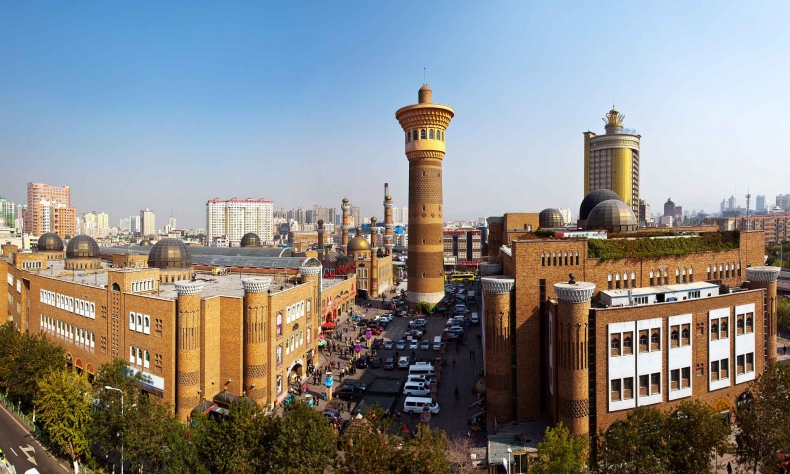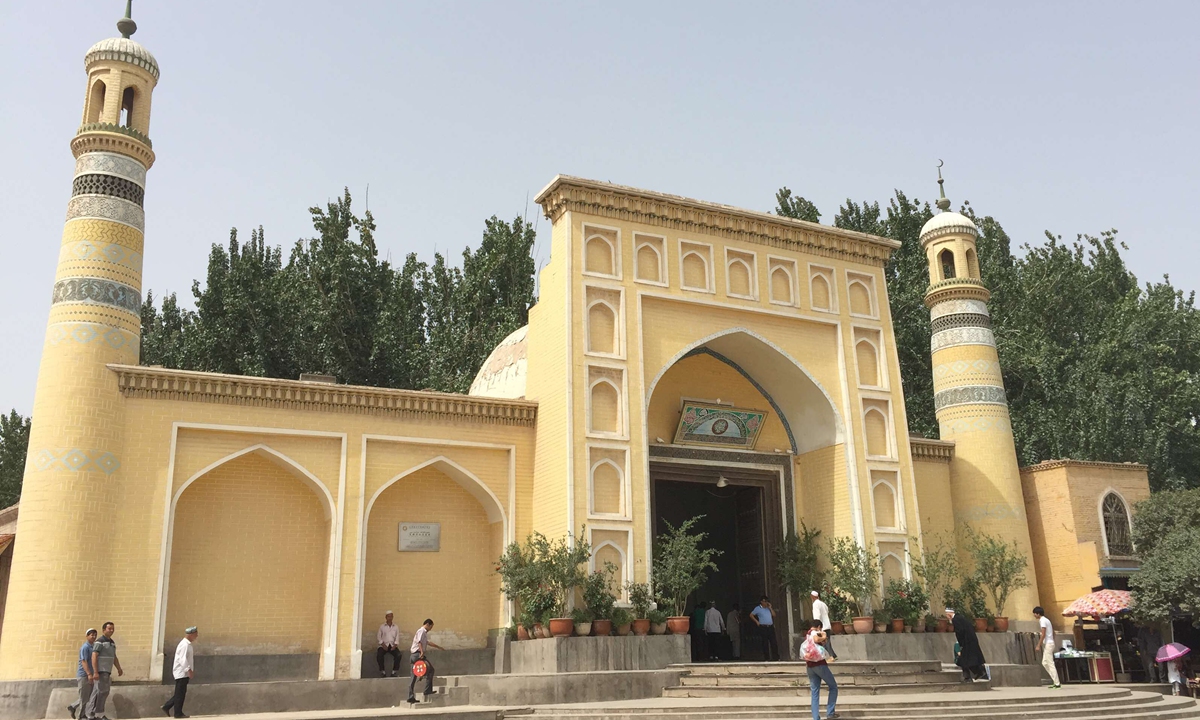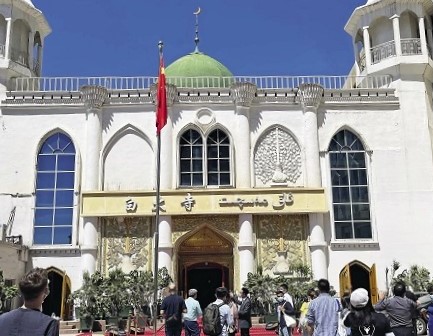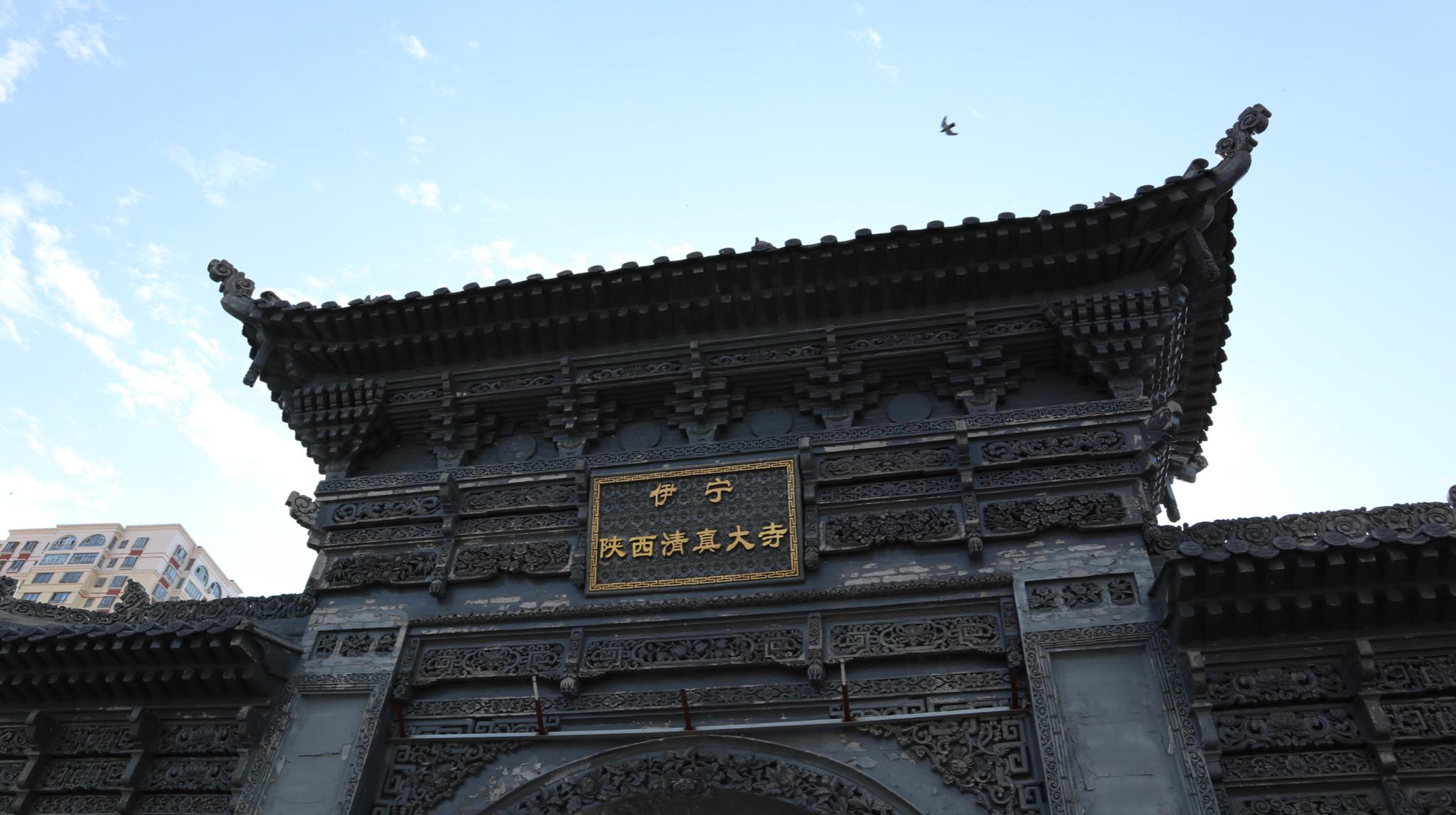An Open Xinjiang with Multi-Ethnic Beliefs

Embracing one or two main religions and the coexistence of multiple other religions made up the historical characteristics of Xinjiang’s religious structure.
Since ancient times, Xinjiang has been a region where ethnic groups live together, religious beliefs are diversified, and many cultures coexist. Primitive religion and Shamanism were initially prevalent in the region. Since the fourth century BC, with the successive introduction of Zoroastrianism and Buddhism, the coexistence of multiple religions was gradually formed. Later, Taoism, Nestorianism, and Islam were introduced, which led to the development of the coexistence pattern. Embracing one or two main religions and the coexistence of multiple other religions made up the historical characteristics of Xinjiang’s religious structure. The various local religions and cultures have coexisted for centuries, learned from each other, and evolved in the process of adapting to the development of Chinese society. Xinjiang Uygur Autonomous Region is now mainly home to the religions of Islam, Christianity, Buddhism, and Taoism.
China has 10 Islamic ethnic minorities, namely Uygur, Kazak, Hui, Kirgiz, Tatar, Ozbek, Tajik, Dongxiang, Salar, and Baoan. All these 10 ethnic groups have a presence in Xinjiang. The first seven ethnic groups are the indigenous inhabitants of Xinjiang, and the last three have migrated from other areas after the War of Liberation (1946-1949). There are various sects that make up the religion of Islam. The majority of ethnic groups such as Uygur, Kazak, Hui, Ozbek, and Tatar in Xinjiang belong to the Sunnite; a considerable number of ethnic people such as the Uygurs and the Ozbeks also belong to the Sufis; the Tajik and Kirgiz people basically belong to the Ismaili school of Shia. Xinjiang has the most Islamic mosques in China, which are distributed in various places, the Id Kah Mosque and Kuqa Mosque in Kashgar and the Shaanxi Grand Mosque in Urumqi are among the most famous ones.

Among non-Islamic countries, there are about 2,000 mosques in the U.S., 1,750 in the U.K., 800 in Germany, and 450 in France. In China, there are more than 20,000 mosques in Xinjiang alone, more than twice the number of mosques of the four countries combined. Both China’s Constitution and laws protect citizens’ right to freedom of religious belief. The Constitution stipulates that citizens have the freedom to believe in religion. Under the protection of the law, the legitimate religious activities and religious festivals of believers are respected, and all religious venues and religious cultural relics are protected.
Baida Mosque
Abdusiker Rehmudur graduated from Xinjiang Islamic Institute in 1993, and has been the imam in the Baida Mosque for 19 years. Together with his two assistants, he leads worship services in the mosque. Built in 1923, the mosque has been used as a place of worship for Muslims since 1924 and has a history of nearly 90 years. The mosque started as an old house and went on to become an important religious site, which has been rebuilt four times, the last in 1998.
Inside the mosque one gets a feeling of warmth and comfort.
Its three-story prayer hall has a floor area of 2,000 square meters. The first floor can usually accommodate at least 700 people. Since the breakout of the COVID-19 pandemic, the number of worshippers has been restricted to 200 due to the need for social-distancing. It supports Muslims to pray five times a day, with the flow of daily worshippers controlled to about 500 people, and more than 600 people during Jum’ah (Friday). On the occasion of religious festivals, such as Lasser Bairam and Id al-Adjha, the number of religious participants could reach 2,000 a day before the pandemic. “Because our mosque is close to the Grand Bazaar, there are many worshippers here,” said Rehmudur, then added, “As you can see, the doors of our mosque and all other mosques are always open to serve the believers.”
With support from the government, service facilities have improved gradually. The well-equipped mosque has a bathing room, a library, a kitchen, activities and living areas, air-conditioning and drinking fountains. During Ramadan, the most important month in the Islamic calendar, the local government arranges medical staff to provide medical services for the worshippers, such as temperature measurement, blood pressure measurement, and regular disinfection of the mosque, so as to provide a safe, healthy and comfortable environment.
Rehmudur said more than 90 years ago, Muslims wanted to find a place to worship, but no mosque was available in the neighborhood. A kind man offered his house as a venue and painted the outer wall white to distinguish it from other buildings, so that everyone knew it was the place of worship, hence the name (bai meaning white, da meaning big).

In addition to prayers, the mosque also teaches religious classes, Rehmudur said. According to Uygur customs, women are not allowed to go to mosques, so men can increase their religious knowledge and then teach their families at home. “We also arrange courses to teach Arabic to help believers read the original text of the Koran,” Rehmudur said.
Shaanxi Grand Mosque in Yining
Located on the south side of Xinhua East Road in Yining County of Ili Kazak Autonomous Prefecture, the Shaanxi Grand Mosque gets its name from the large number of Shaanxi Muslim soldiers who came to Xinjiang during the Qing Dynasty (1644-1911).
Built in 1781, this mosque has a history of 270 years. It covers an area of about 3,000 square meters and was built by the Qing government to accommodate the religious needs of Muslim soldiers of the Hui ethnic group from Shaanxi, Gansu, Ningxia, and Qinghai who remained in the area to quell rebellions. It underwent a restoration in 2010 following the principles of maintaining its original size, style and material quality as required by the autonomous regional government. Its style is typical of the Central Plains culture and Arabic decorative style. “This mosque proves that our border area has had close contacts and exchanges with other regions of China,” said imam Ma Jirong. “It also proves that Xinjiang has been an inseparable part of China’s territory since ancient times,” he added.

Its prayer hall covers an area of about 2,100 square meters. Like other mosques, the five worship services a day, Jum’ah, and important festivals are held regularly. The door is always open to all Muslims to worship and study their religion. Although the exterior of the building does not indicate it is a mosque, the interior exudes a peaceful Islamic atmosphere.
Its reading room contains more than 2,000 copies of the Koran and religious scriptures, and is open all day.
Born in Shaanxi Province, the 60-year-old Ma has been an imam in the mosque for 10 years. “My father was an imam at this mosque for 50 years, and he shared a lot of religious insights at the mosque, so I followed him to study [Islam], and later also studied at the China Islamic Institute,” said Ma.
The cultures of all ethnic groups in Xinjiang have been exchanged, passed on, and developed for centuries, enabling the freedom of belief of all religions to be fully respected in Xinjiang.
 Facebook
Facebook
 Twitter
Twitter
 Linkedin
Linkedin
 Google +
Google +










